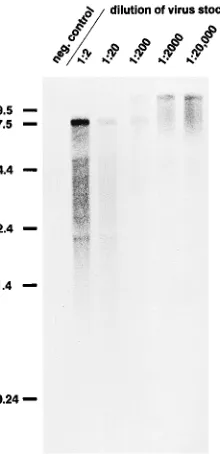Cytopathogenicity of classical swine fever virus caused by defective interfering particles.
Full text
Figure




Related documents
An available instrument is a verification cost per patient treated, which allows obtaining the first-best allocation of patients to the new treatment, under the risk sharing
intra abdominal abscess. and Davidson ED Hepatic abscesses Improvement 1 mortality with early diagnosis and treatment. 22) Thakur ML, Coleman RE, Welch MJ.: Indium —111
mock- or RV-infected Vero 76 cells (Fig. 1, lanes 3 and 6), and 22 normal human serum samples (30) did not immunoprecipitate the RNPs con-.. taining the 5 9 ( 1 )SL RNA, even upon
Nevertheless, the clearance of influenza A/PR/8/34 (H1N1) virus from the lungs of infected BALB/c mice was significantly delayed after the transfer of virus-specific T cells
To address why these gD mutants do not function in infection and to examine which regions are involved in various aspects of gD function, we tested the two wild-type and
In contrast to the PCR studies which did not detect any differ- ences in the estimated levels of establishment of latency, the in situ hybridization results clearly indicated that,
Instead, we found that two cellular transcription factors, an upstream stimulatory factor USF, and a member of the E2F family of proteins, bind directly to the pol promoter at
The most striking finding from the analysis of inferred amino acid sequences was the unexpected clustering of V3 loop se- quences detected at later time points from the two infants